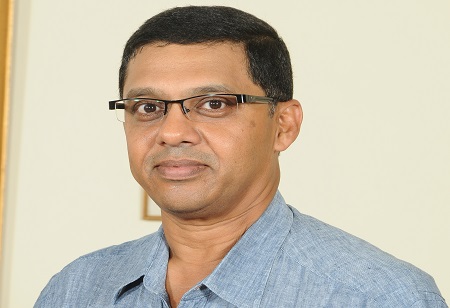
The Make in India initiative is the start of a whole program to develop significant manufacturing capability within the country. The aim is to increase the contribution of the manufacturing sector to GDP to at least 30 to 35 per cent from its existing level of 16 to 17 per cent. India with its very large population will be a major consumer and will always be a market for many FMCG, automotive, consumer and industrial organizations.
After being announced in October 2020, the Make in India program has started to see immediate success in the electronics, defence sub-assemblies and manufacturing of intermediaries for pharmaceuticals verticals. In addition, the solar cell and module business is also seeing success as the tariff imposed on imports is driving production and competitiveness of the local industry.
To sustain this initial success and continue with the growth of this sectors the support of the government with the appropriate policy and infrastructure is required in a large dosage. Indian manufacturing competitiveness will improve with trained manpower and also with strong policies that will enhance the productivity of the existing workforce. Policy should be able to enhance gender diversity on the manpower front and ensure backward integration as we lack total capability in core raw material manufacturing on the technology front.
Post COVID many internal organizations looked for alternatives to China. While India has a large population there is a huge deficit in trained manpower and effective skilling programmes. According to the Economic Survey of 2016-17, manufacturing of low cost goods (shoes, clothes etc.) have been moving out of China for half a decade to countries like Sri Lanka, Vietnam and Bangladesh. When comparing the competitiveness of Vietnam and Bangladesh to Indian manufacturing it needs to be understood that in the high technology space India has an advantage due to large investments into engineering and scientific education and research institutions. With regards to low-cost manufacturing which requires high productivity and disciplined workforces India still lags behind as the population is highly unskilled and the cost of labor in India is comparatively higher in comparison to neighbors like Vietnam and Bangladesh. It will be quite a while before we can get absolutely competitive and this can be achieved only by government policy support and infrastructure support.
The Indian small and medium manufacturing enterprises have been the backbone of the Indian economy for most of the last three decades, however, they are non-competitive on an international platform due to sheer lack of scale.
To improve the skills and to make the MSME segment in India competitive it is important that they start working in consortiums, and have coordination committees, which will be able to optimise and pool the strength of member companies together and develop scale.
Consortium working will also help in sharing skills and building capability. Financing will continue to be a major issue as the Indian banking system is aggressively focussed on securities and collateral for small lending. These loans and funding to MSME consortiums should be guaranteed by the government similar to what was done during the COVID revival to help modernise and install more automation. Availability of low cost and speedy access to funds will go a long way in ensuring that MSMEs become competitive and also innovative.
Automation will help MSMEs become more flexible and manufacture products to the required qualities expected to do business internationally. In addition MSMEs working in consortiums will be able to provide holistic solutions rather than partial products making them more competitive and preferred.
These industries service a huge market in India. Post COVID demand has increased very aggressively for Indian companies. In the present political climate across the world, India enjoys a very unique geopolitical situation. It is looked at as an alternate manufacturing base to China if not on the same scale as at least an alternative.
Ongoing world events have disrupted supply chains making it difficult to get things going smoothly in the short run. The disruption is prevalent across the world. It is important at such times to be transparent and open on the challenges being faced and work towards finding alternative materials and supplies to keep pace with the demand.
Overall, the future of Indian manufacturing is highly positive, we have a large workforce where once we develop skills will be highly capable. We have a young population who can work hard and be trained to have the right capability. Indian manufacturing should adapt to produce volumes and setup large factories. We need to have laws and rules which are adaptable to employee large volumes of people and there should be a clear trust between government and industry.
From the manufacturing side it has to ensure that there is no wasteful expenditure and raw material is properly utilised to ensure competitiveness. MSMEs and other industries should automate and be analytical to ensure inventory is optimised and continuous innovation is in place for cost reduction and being competitive. Consortium working of smaller companies to provide total solutions to customers would also go a long way in pooling together entrepreneur resources.
We use cookies to ensure you get the best experience on our website. Read more...